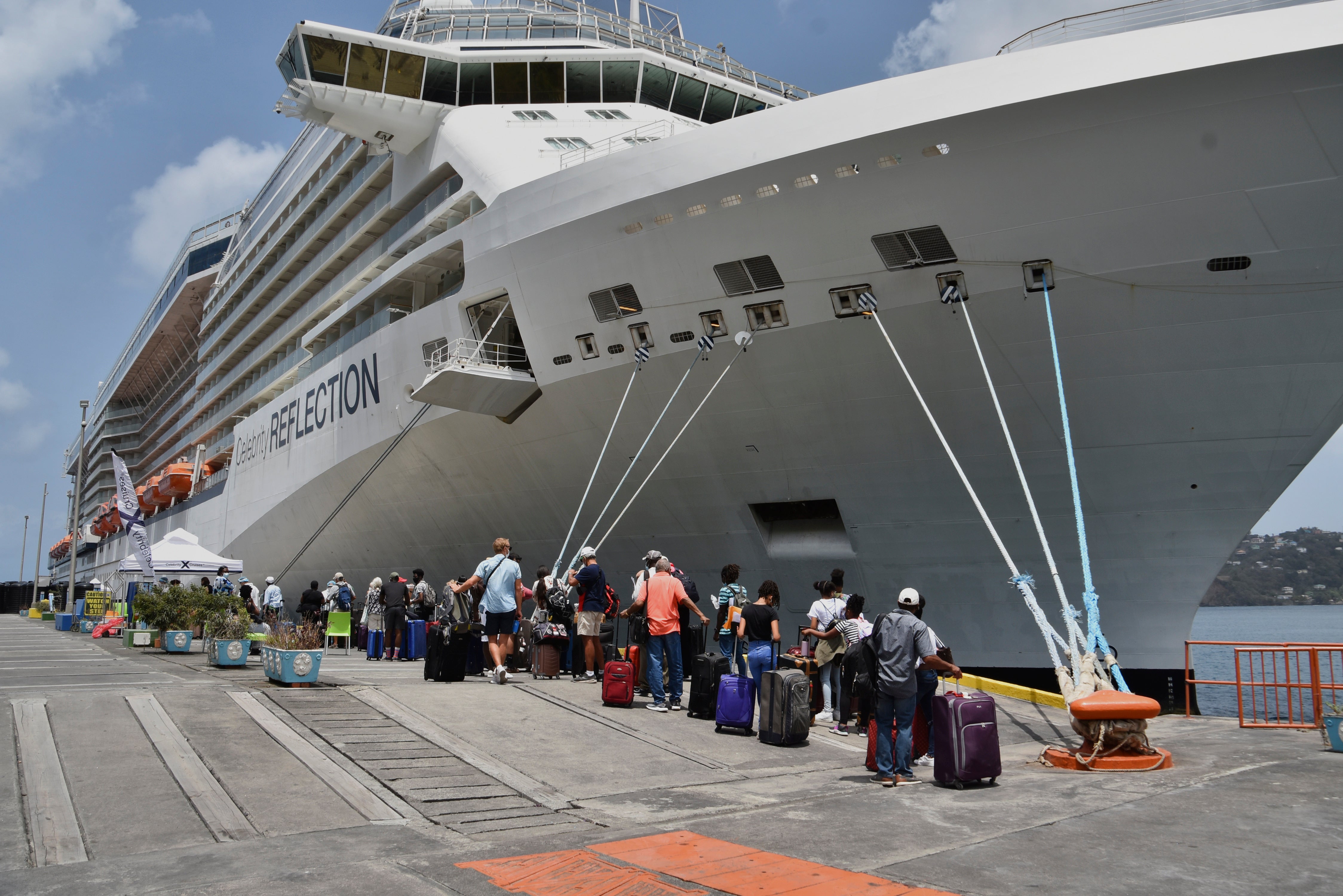New blast at St. Vincent volcano; cruise ship helps evacuees
La Soufriere volcano has shot out another explosive burst of gas and ash and a cruise ship has arrived to evacuate some of the foreigners who had been stuck on a St. Vincent island by a week of violent eruptions

Your support helps us to tell the story
From reproductive rights to climate change to Big Tech, The Independent is on the ground when the story is developing. Whether it's investigating the financials of Elon Musk's pro-Trump PAC or producing our latest documentary, 'The A Word', which shines a light on the American women fighting for reproductive rights, we know how important it is to parse out the facts from the messaging.
At such a critical moment in US history, we need reporters on the ground. Your donation allows us to keep sending journalists to speak to both sides of the story.
The Independent is trusted by Americans across the entire political spectrum. And unlike many other quality news outlets, we choose not to lock Americans out of our reporting and analysis with paywalls. We believe quality journalism should be available to everyone, paid for by those who can afford it.
Your support makes all the difference.La Soufriere volcano shot out another explosive burst of gas and ash on Friday as a cruise ship arrived to evacuate some of the foreigners who had been stuck on a St. Vincent island coated in ash from a week of violent eruptions.
The explosions that began on April 9 forced some 20,000 to flee the northern end of the eastern Caribbean island for shelters and contaminated water supplies across the island.
Friday morning's blast “wasn’t a big explosion compared to the ones that we last weekend, but it was big enough to punch a hole through the clouds," said Richard Robertson, lead scientist at the University of the West Indies Seismic Research Center, in an interview with local NBC radio. “Probably got up to 8,000 meters (26,000 feet)."
During a comparable eruption cycle in 1902, explosive eruptions continued to shake the island for months after an initial burst killed some 1,700 people, though the new eruptions so far have caused no reported deaths among a population that had received official warning a day earlier that danger was imminent.
Meanwhile, British U.S. and Canadian nationals were being evacuated aboard Royal Caribbean Cruises' Celebrity Reflection from the harbor in the Kingstown, capital of St. Vincent and the Grenadines. The ship was due to arrive Saturday in Dutch Sint Maarten
“As of right now, we are being evacuated for our safety and to keep the island as safe as possible," said LLeah Ransai, a Canadian who was among several students from Trinity School of Medicine who were boarding the ship. "Between the school, the government and the embassies of the US and Canada, we’re being evacuated now.”
The U.S. Embassy said those aboard would have to make their own travel arrangements home.
It also noted in an official statement that the U.S. Centers for Disease Control and Prevention had recommended against travel on cruise ships because the chance of getting COVID-19 and said people who had been in close contact with suspected COVID-19 cases were barred from the trip. All aboard were supposed to have a negative rapid antigen test taken within 24 hours of boarding.
Meanwhile, thousands of locals were stuck n emergency shelters with no idea when they might be able to return home.
Levi Lewis, 58, a retired public servant from the town of Fancy, said the eruption had left him trying to get by with practically nothing.
“I just reusing clothing cause i didn't walk with much," he said. "Plus water is an issue, so I’m trying to conserve it still.”
“I want to go back home, or to whatever is left of it," he added.
A few people, however, never left, defying evacuation orders.
Raydon May, a bus conductor in his late 20s who stayed in Sandy Bay throughout the eruptions, said he had always planned to stay if the volcano erupted and was trying to protect properties in the community while making occasional trips outside the evacuation zone to pick up water and supplies.
He said so much ash had fallen that the roofs of houses were collapsing under the weight.
“One roof might get on like three truckloads of sand," he said. “We trying to help ... but we can’t help everybody.”